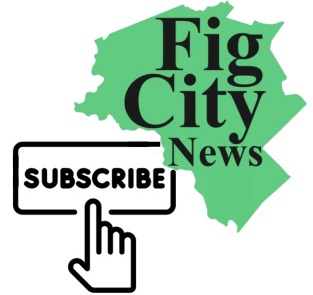The development projects 28 Austin Street and Trio, which opened a few years ago, provide critical case studies by which to evaluate other, forthcoming large developments. One of the presumed benefits of both projects has been that large numbers of their residents would use public transit. That is why the City Council designated both as “Transit-Oriented Developments” in their Board Orders.
A year ago, a Planning Department staffer revealed that a total of two residents out of several hundred at Trio had utilized its free Commuter Rail passes.[i] These were subsidized by a fund provided by Mark Development up to a maximum of $300,000 to stimulate rail use. By last June, 1% of those funds had been used, despite Trio’s having opened two years earlier. A meeting of the Land Use Committee last June recorded this failure:
“The understanding is that a significant portion of the residents would use public transit. That has clearly not been borne out. It has implications collectively for the (City) Council for future projects.[ii]
I wish we could teach these implications to our leaders, but I’m skeptical for three main reasons:
First, I’m skeptical because five years ago, Neighbors for a Better Newtonville gave its Green Book to all city councilors. That book stipulated that Newtonville had only minimal potential for transit-oriented development according to the standards of the national institutes that study this, due to our infrequent commuter rail trains and spotty bus service.[iii] Yet too few councilors acknowledged this evidence.
Second, I’m skeptical because the MBTA Communities Act requires Rapid Transit Communities to up-zone for twice as much density as Commuter Rail and Adjacent Communities.[iv] But the villages our planners have targeted for the most development − with VC3 zoning, and with the VC1 zones that consume the most residential parcels − are Newtonville, Newton Corner, and West Newton, which all have weak transit capacity.[v] Meanwhile, the villages with the most transit capacity and least new development (like Newton Center and Waban) are several times richer, half as racially diverse, and, seemingly, too politically powerful to reverse these priorities.[vi] This is today’s redlining!
Third, I’m skeptical about our leaders’ wisdom because few of them have seriously considered up-zoning Brae Burn and Woodland golf courses near the Green Line.[vii] Development there could be set back to avoid disrupting nearby neighborhoods and other, already vibrant Green Line village centers. Let’s zone for new villages with plenty of trees and gardens and affordable and “missing middle” housing — and for a commercial zone for offices and labs, and for a new Norumbega Park for dancing, music, and lectures. Let’s again make Newton a destination city and enlarge our tax base.
I made these points in a recent Zoning and Planning committee meeting. Despite my skepticism, I implored: Let’s be creative! And let’s learn from our failures!
Responding to my talk, City Council President Albright challenged my characterization of Trio as a failed TOD, asserting that more data was needed to conclude that. In particular, she said that households at Trio needed less than one parking stall per unit and that a former colleague who lives there does not need to commute Boston, like the record 44% of Newton’s workforce who now work from home.[viii] “Don’t you think we need more data?,” she asked me. I responded that my data came from the minutes of the June 14 Land Use Committee meeting, which also cited Damien Chaviano of Mark Development saying that 55% of residents at Trio were “empty nesters.”[ix] I further noted that about one-quarter of its residents were retirement age. So, we agreed that Trio was useful at providing housing for older residents and people working from home. Still, I concluded, my data sufficiently showed that few Trio residents took transit, so that it was not a transit-oriented development. And it need not be close to transit, only to shopping and restaurants, to serve the housing needs we agreed on. But that does nothing to lessen traffic congestion (and arguably sprawl), seemingly a major purpose of TOD.
Councilor Kalis then asked what I was for. I reiterated my argument in favor of up-zoning Brae Burn and Woodland golf courses for new villages near the Green Line, which runs almost twenty times more frequently than the Commuter Rail. I further pointed out that new villages could be developed following the plan of the (2020) Brookings Institution report “Zoned Out,” although land costs and interest rates today would be several times more than it assumed.[x] To that, Councilor Crossley said, “it might be possible to develop the golf courses…everything is going to change.”
My hope is not that “everything is going to change,” but that development on golf courses could avoid overdevelopment in already healthy village centers and provide genuine TODs.
[i] A December 2021 email from City Planner Neil Cronin to City Councilor Tarik Lucas stated “119 market-rate and moderate-rate units are renting 102 stalls for a ratio of .86 stalls per unit. There are two residents utilizing the transit subsidy.” Cronin quoted in email from Lucas to me, 12/20/2022.
[ii] June 14, 2022, Land Use Committee “Meeting Minutes.” These state on page 1 that $3,898 of the $300,000, or 1.3%, had been used by this time. Page 3 notes that expectations “had not been borne out.”
[iii] Green Book chapter on Transit-Oriented Development.
[iv] Massachusetts Department of Housing and Community Development, Housing Choice/MBTA Communities Guidelines, 8/12/2022, p/. 13.
[v] Richard Rasala, “Thoughts on Newton Village Center Zoning,” 1/6/2023, pp. 2-3.
[vi] See “Class, Race, and Development in Newton.”
[vii] Councilor Pam Wright had, however, explored this possibility for both golf courses, and found it feasible for both, from the standpoints of being close enough to T stations and having more environmental sustainability. The latter would be possible by having less lawn, more trees, and well-designed neighborhoods. I got the idea from her.
[viii] Greg Reibman of the Needham/Newton Chamber of Commerce had cited this as a “new fact” earlier in the meeting.
[ix] Op. Cit. June 14, 2022, Land Use Committee meeting minutes. See page 3.
[x] Sarah Crump and Jenny Schuetz, Metropolitan Policy Program, Brookings Institution; Trevor Matos, Luc Shuster, Boston Indicators, “Zoned Out: Why Massachusetts Needs to Legalize Apartments near Transit,” 10/21/2020.





